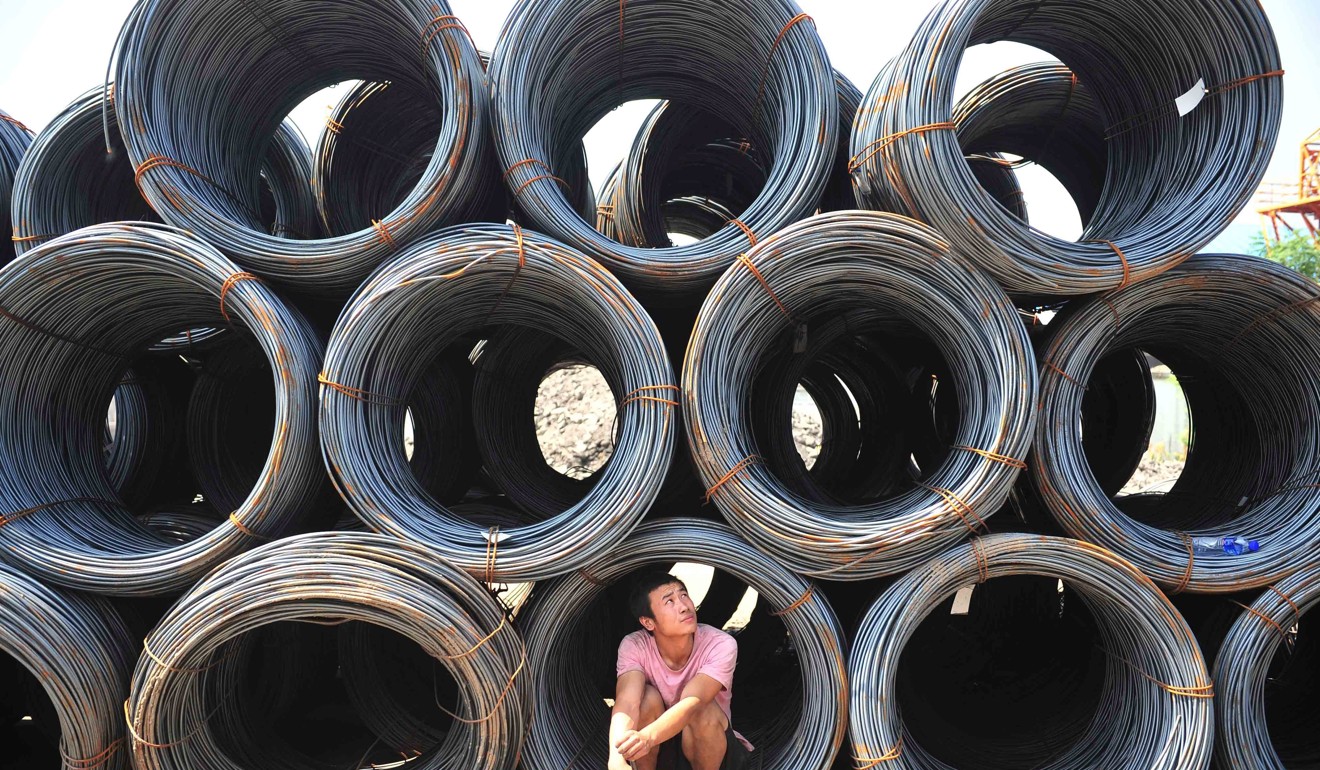
China’s slow steel industry cuts unlikely to satisfy Trump’s demands

China’s steel mills, a target of US President Donald Trump’s ire, supply half of world output, so every move they make has a global impact.
The steel industry swollen over the past decade to support a history-making Chinese construction boom. Once that tailed off, the country was left with a glut of half-idle, money-losing mills.
Beijing has closed mills and eliminated a million jobs but is moving too slowly to defuse American and European anger at a flood of low-cost exports that is double the volume of second-place Japan.
Trump responded last week with a blanket tariff increase on steel and aluminium, another metal China’s trading partners complain it oversupplies.
Chinese authorities say they shut down 30 million tonnes of steel production capacity last year. That cut alone is equal in size to the annual output of the number nine producer, Brazil, but only a sliver of China’s 800 million tonnes.
Beijing’s goal is to make its industry more efficient and profitable, not just smaller. So while some mills close, bigger rivals step up production and could become even more formidable global competitors.
Total steel production rose 5.7 per cent last year compared with 2016 to a record 831 million tonnes, according to the Chinese Cabinet’s planning agency, the National Reform and Development Commission. That was on top of a 1.2 per cent increase in 2016 and more than seven times Japan’s output.
The industry is forecasting another 1 per cent rise this year.
“Without the capacity cutting, there would have been much more production than there is now,” said Wang Suzhen, an analyst for Mysteel, a news service that follows the Chinese industry.
Steel and heavy industry have long been a political touchstone for Chinese leaders, which led to economic disaster in the 1950s.
In 1958, then-leader Mao Zedong encouraged the public to produce steel in backyard furnaces for his Great Leap Forward, a short-lived attempt at overnight industrialisation.
Villagers stripped hillsides for fuel and burned doors and furniture to melt pots and pans and whatever other metal they could find to produce useless pig iron. The diversion of resources into the Great Leap led to famine that killed tens of millions of people.

In the past two decades, production took off as Chinese cities were bulldozed and rebuilt with thousands of new office and apartment towers, shopping malls, bridges and motorways. Output rose from under 130 million tonnes in 2000 to more than 600 million in 2010.
China’s voracious appetite for iron ore helped to drive economic booms in Australia, Brazil and other supplier countries. Mills bought Western and Japanese smelter technology.
Steel and aluminium, along with coal, glass and solar panels, are among many Chinese industries that mushroomed until supply vastly outstripped demand.
Once the building boom cooled, suppliers left with vast stockpiles of unsold goods resorted to price-cutting wars that threatened many with bankruptcy.
Beijing has announced plans to shrink steel and coal but has yet to outline plans for others.
China’s aluminium output is a fraction of steel’s size at about 36 million tonnes last year. But foreign competitors say the impact of low-cost Chinese exports on their industry has been even more devastating.
Last year’s exports fell 30 per cent from 2016 to 63 million tonnes, but that still was one-quarter of the global total and more than twice Japan’s 30 million tonnes.
Beijing tried to defuse threats of trade sanctions by agreeing at a meeting of the Group of 20 major economies in 2016 to form a global panel to discuss how to shrink the industry. But it avoided any binding commitments.
In the US market, sales of Chinese steel have plunged due to earlier tariffs of up to 522 per cent imposed on some products to offset what Washington says are improper subsidies to producers.
That means that while Trump has singled out China for criticism, his latest tariff hike is likely to hit US allies Japan and South Korea harder.
The United States bought just 1.1 per cent of China’s steel exports last year compared with 12 per cent for South Korea and 5 per cent for Japan, according to the US International Trade Commission.
Steadily rising Chinese production increases pressure for mills to export, putting downward pressure on prices and undercutting exports from American, European, Japanese and Korean mills.
At the same time, Beijing is merging its biggest steelmakers into even bigger, more efficient competitors.
China created the world’s second-largest steelmaker after Europe’s ArcelorMittal with the 2016 merger of two state-owned producers, Baosteel Group and Wuhan Iron & Steel.
The merged company, Baowu Steel, wants to increase production capacity by two-thirds to 100 million tonnes by acquiring smaller mills, the company general manager told the official China News Service in September.